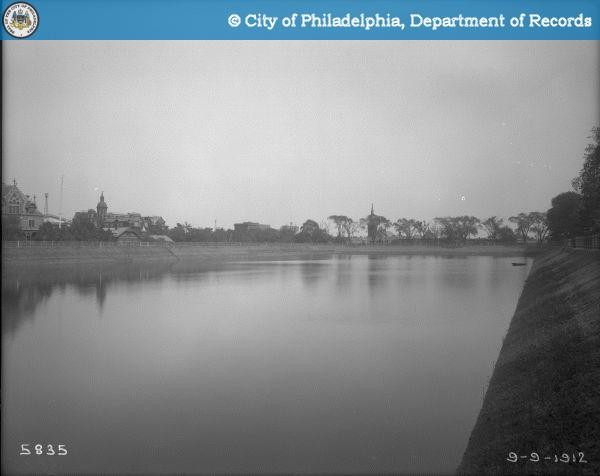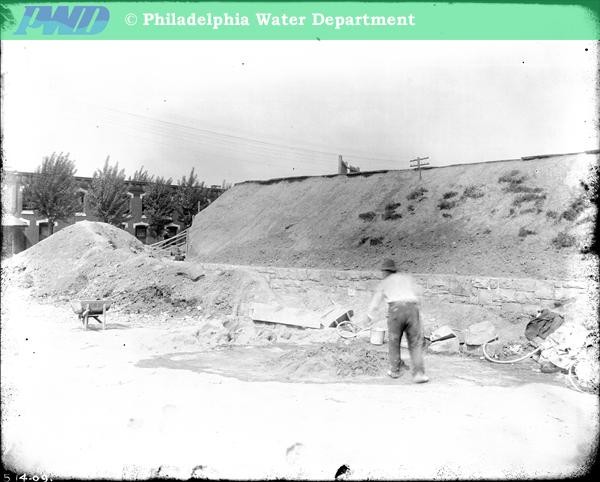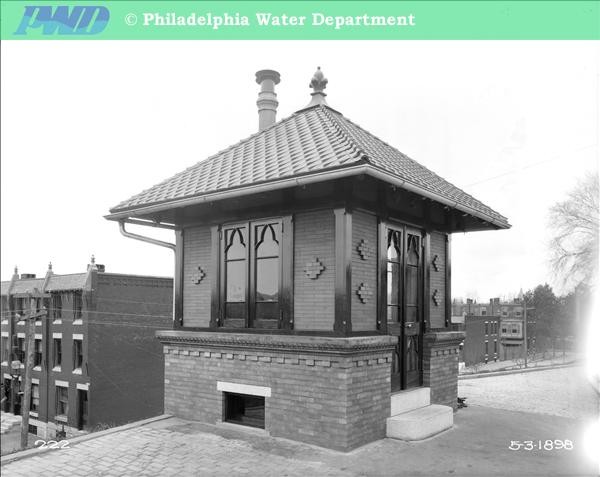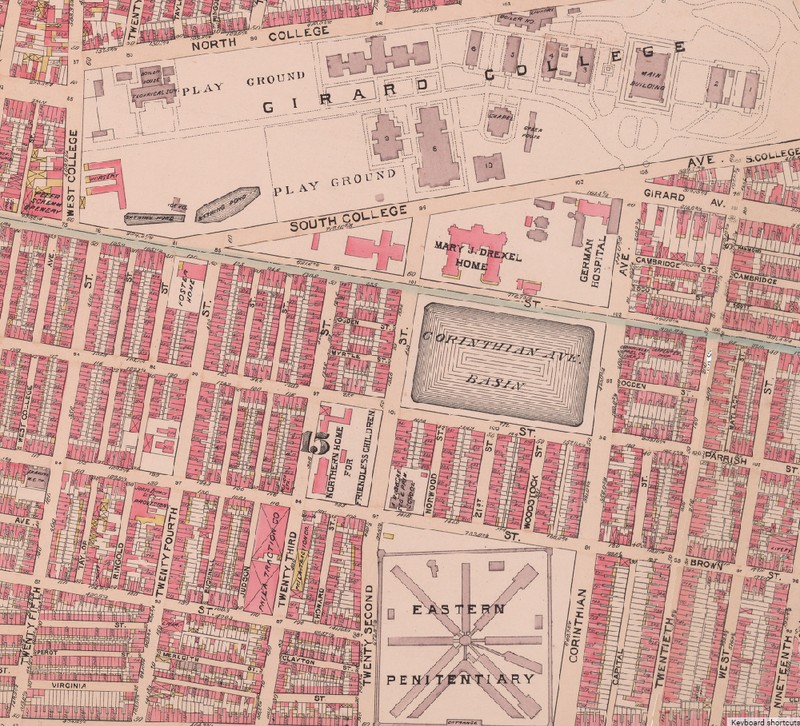Corinthian Reservoir (former site)
Introduction
Text-to-speech Audio
The Corinthian Avenue Reservoir was constructed in 1854 to hold and help supply drinking-water from the Schuylkill River. It was intended to expand the capacity of the city’s water system, and, since it was at a higher elevation than the earlier Fairmount reservoir, it would allow the gravity-powered water system to reach the higher floors of the quickly expanding Philadelphia.
Images
Corinthian Reservoir, September 9, 1909. City Archives, DOR Archives. Public Works 5835-0

Cointhian Reservoir, Embankment. May 14, 1909. City Archives, Philadelphia Water Department Collection. 1986.2.170

Watch Box, Corinthian Reservoir. City Archives, Philadelphia Water Department Collection.

Detail of 1895 Philadelphia Atlas. G. W. Bromley. Athenaeum of Philadelphia.

Backstory and Context
Text-to-speech Audio
Before there could be a reservoir on Corinthian Ave, there first had to be Fairmount Water Works. Constructed in 1812, the Water Works initially pumped vital drinking water from the Schuylkill to a reservoir on top of the Fairmount (now the location of the Art Museum), from which it would flow by gravity to houses in the city. As years passed, Fairmount became ill-equipped to supply Philadelphia as the buildings got taller and the city got larger. The Corinthian Reservoir was constructed in 1854 in response to the Act of Consolidation, which meant that upwards of 300,000 residents from the outskirts of Philadelphia were now residents of Philadelphia and needed city water.
When full, the Corinthian basin contained 20,321,392 gallons, thus affording the Fairmount works a cumulative storage of 47,200,402 gallons. It was supplied by means of a 4’ diameter standpipe leveled at 50’ high on the river side of Fairmount reservoirs.
As the area around the Schuylkill began to industrialize, the water supply eventually became tainted. In 1890 there was a notable outbreak of typhoid and cholera and eventually the city decided a filtration system was needed. The old system did not have enough room for adequate treatment and sand-filtration, so the Water Works and connected reservoirs, including Corinthian reservoir, were taken out of service in 1909. The reservoir can still be seen on maps up to the 1920s, but by 1934 the reservoir had been filled in and converted into four blocks of residential buildings, which it remains today.
Cite This Entry
Cecilia Fralick on behalf of Girard College and Katherine Haas. "Corinthian Reservoir (former site)." Clio: Your Guide to History. November 9, 2022. Accessed March 30, 2025. https://theclio.com/tour/2392/4/reverse
Sources
Graf, Walter A., et al. “The Water Works of the City of Philadelphia: The Story of Their Development and Engineering Specifications.” The Water Works of the City of Philadelphia: 2014, http://www.phillyh2o.org/backpages/GrafHistory_HSP.htm.
Gibson, Jane M. “Workshop of the World.” Fairmount Water Works, 2007, https://www.workshopoftheworld.com/fairmount_park/water.html.
“Another Zoning Code Fail, This Time on Taney Street in Brewerytown.” OCF Realty, 2018, https://www.ocfrealty.com/naked-philly/brewerytown/another-zoning-code-fail-time-taney-street-brewerytown.
Garcia, Javier. “Never Parched.” Hidden City Philadelphia, 16 Sept. 2011, https://hiddencityphila.org/2011/09/never-parched-2/.
https://www.phillyhistory.org/PhotoArchive/Detail.aspx?assetId=6789
https://www.phillyhistory.org/PhotoArchive/Detail.aspx?assetId=83683
https://www.phillyhistory.org/PhotoArchive/Detail.aspx?assetId=83682
https://www.philageohistory.org/rdic-images/view-image.cfm/bromley1895-plate11

